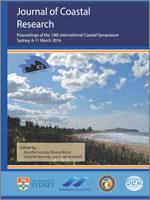Oliveira, J.F.; Barboza, E.G., and Benavente, J., 2016. Nearshore Dynamics and Holocene Evolution of the Coastal Barrier South of the Santa Marta Cape, Southern Brazil In: Vila-Concejo, A.; Bruce, E.; Kennedy, D.M., and McCarroll, R.J. (eds.), Proceedings of the 14th International Coastal Symposium (Sydney, Australia). Journal of Coastal Research, Special Issue, No. 75, pp. 437–441. Coconut Creek (Florida), ISSN 0749-0208.
The emerged part of the Pelotas Basin extends about 800 km from the Polonio high (Uruguay) to the Florianópolis high (Santa Catarina state, southern Brazil). Since 6-5 ka B.P., the sea level has been dropping slowly, and the sediment balance is the principal factor that controls the actual barrier development. The Holocene barrier presents sectors of transgressive patterns that are usually located in coastal projections, while regressive sectors generally appear in the embayments. This work analyses the evolution of the barrier along a 30 km stretch of coast south of the Santa Marta Cape (Santa Catarina State), in the northernmost part of Pelotas Basin. The sub-superficial configuration of the barrier was characterized through Ground Penetrating Radar (GPR) profiles surveyed perpendicular to the coastline. In addition, an analysis of the nearshore wave propagation was carried out through SMC-Brasil (IHCantabria) to simulate the currents generated by breaking waves and the net sediment transport. The results show two different behaviors along the barrier system; the northern part with transgressive characteristics (dipping landward reflectors) and the southern part with regressive characteristics (dipping seaward reflectors). These different behaviors are associated with the slight changes on the coastal orientation and on the slopes of the shoreface and upper continental shelf. These two factors influence in how waves approach the coast, generating an imbalance in the sediment budget, which is shown in the characteristics of the distinct sectors studied.





